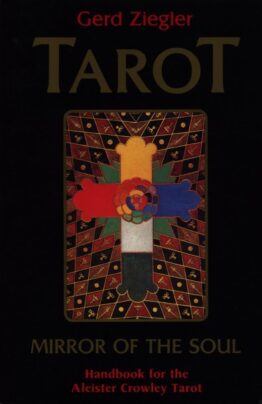Mastering the Tarot – Paul Fenton Smith
An adept Tarot reader can make it all look deceptively simple. If you stand and watch a reading in an open-air market, it seems like no more than a conversation over a few cards selected at random. An experienced reader can make the whole process seem like a conversation with a trusted friend.
Of course, in reality people may not like to bother their friends with such matters, so they seek out a stranger. Twenty-one years’ experience of reading for others has taught me that, as humans, we are often more prepared to trust a complete stranger than those whom we most care about. It makes sense when you consider that a stranger has less to lose by telling you the truth, whereas a friend has associations with you and an emotional investment in your life going a certain way.
Consulting the Tarot (the book of life) for guidance as to the wisest course of action can make the difference between being successful and living with regrets. However, sometimes even when your client asks what appears to be a straightforward question you can arrive at an answer which is confusing.
Readers of my previous Tarot book, The Tarot Revealed (Simon & Schuster Australia, Sydney, 1995) often asked for more information on yes/no questions and on how to interpret the answers to them. As the book was only designed to be an introduction to the Tarot, it did not go into great detail regarding the wording of questions, interpretation of cards in combination, or even questions which are better left unasked This book deals with these areas and more. Using actual card layouts from readings with consenting chents and students, I’ve collected a variety of questions and given my interpretations at the time.
As telephone readings become increasingly popular, it is only fair to include mention of specific techniques for telephone readers, as telephone readings differ from giving face-to-face readings. Some readers prefer telephone readings as they can relax through the process and not have to worry about their appearance or their methods being scrutinised. Others find them more difficult than face-to-face readings because they cannot see the expressions of the client to confirm their own accuracy.
In Mastering the Tarot you will also find information on successfully setting up a practice, with tips on, for example, handling difficult clients and setting boundaries between yourself and your client. Cleansing and rebalancing techniques are also included in Mastering the Tarot, as professional readers need to be aware of psychic hygiene to avoid being psychically or emotionally drained by clients (and the friends they read for).
I hope you find this book a useful tool in streamlining your Tarot readings and improving your working knowledge of the Tarot. It is designed to be a useful daily guide when giving readings, and a guide to career opportunities involving Tarot card readings


 Đang tải dữ liệu
Đang tải dữ liệu







Chia sẻ ý kiến của bạn